Day One - 22 Dec 2016 (Part 2)
The Portuguese Era in Melaka (1511-1641) - The Portuguese ruled Melaka for 130 years. In 1511, the Portuguese Viceroy of India, Afonso de Albuquerque led an expedition with 14 ships & 1,100-1,200 men and conquered Malacca (Melaka). Malacca then was ruled by a Sultan and this coastal town along the Straits of Malacca was a key trading post for spice trade among the Asian nations ie Arabic, Persia, China, India, Japan, Indonesia, Ceylon & Bengal. The main spices traded were pepper, cloves, ginger, cinnamon, nutmeg etc.
Going Portuguese - Following the Portuguese trail in the historic city of Melaka
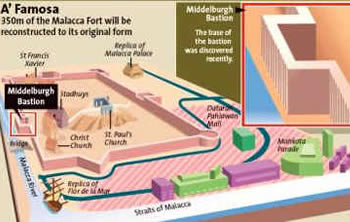
1) Maritime Museum (Muzium Samudera), Jalan Merdeka - entrance fee (Rm5.00)


2) Fort of Malacca Bastion Victoria (1588)


3) The Fort of Frederik Hendrik (1560s)


4) St Francis Xavier Church (1856) - Located in Jalan Laksamana, the church is built on the site of an old Portuguese church. The church's finishing touches were completed in 1859 by Father Allard, with the present day presbytery built in 1874
5) Portuguese Settlement, Kampung Portuguese (Portuguese Village), Melaka - located 5km from the Melaka city center. Home to a small community of around 1,000 people descended from early Portuguese settlers. Best time to visit during the Christmas period & evening when Christmas lighting is on and also to savor the local Portuguese seafood, drink & wine till the wee hours at the Portuguese Square ! The Portuguese Square was officially opened in January 1985 by Dr Mahatiar, the Prime Minister of Malaysia.
Take Panorama Bus No 17 from Melaka Sentral station or Dutch Square to Kampung Ujong Pasir and then walk for 10-15mins to the Portuguese Village

















 |
 |
| Town Bus No 17 from city to Kampung Ujoing Pasir |
6) St John Hill Fort - an early 16th century Portuguese built fortress located on top of the St John Hill, approximately 0.75km from Portuguese Square or 3km from the Melaka city center - I did not visit this historical site on this trip.
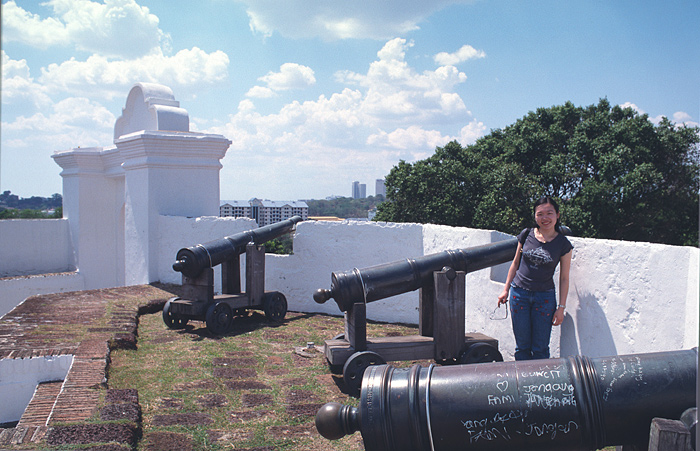
The Dutch Era in Melaka (1641-1825)
The Dutch ruled Melaka for 183 years, the longest under a foreign control. In 1641, the Dutch defeated the Portuguese with the help of the Sultanate of Johor. There was relative peace in Melaka during this period. However, the Dutch preferred Batavia (Jakarta) as the economic & administrative center in the region. By the 17th century, the Dutch trade declined and Melaka ceased to be an important port. Due to this change, the sultanate of Johor had emerged as a dominant local power in the region.
Going Dutch - Following the Dutch heritage trail in the historic city of Melaka
1) Maritime Museum, Jalan Merdeka
 |
| The iron chest of the Dutch era |
2) Porta De Santiago (A' Famosa) - The Old Gateway (1511) - This fortress was badly damaged during the Dutch invasion in 1641. At the top of the gateway, there is a crest which was the town's coat-of-arms and the soldier on the crest carries a shield with the VOC emblem. VOC stands for Vereenigde Oost-Indische Compagnie or United East Indian Company, named after Governor Balthasar Bort, Malacca's governor from 1665-1679.
3) Dutch Graveyard - found at the foot of St Paul's hill, the graveyard was used by the Dutch from 1670 to 1882, but out of the 38 graves, only five belong to Dutch people.
4) St Paul's Church (1521) - St Paul's Church was not a Dutch church and that was not it's name during the Dutch times. The Dutch reformists do not name their church after saints. After the capture of Malacca, the church was converted to a Dutch Reformed Church for the Malacca community and it was just called the Bovenkerk or Church up the Hill. Because of its strategic position on top of the hill, it was used as an observation point for the fort and its surrounding areas.
 |
| The Ruins of St Paul's Church |
5) The Stadthuys or The Town hall (1650) - The oldest Dutch building in South East Asia. It was built soon after the Dutch captured Malacca, the design of this building resembled that of the Old Stadhuis of the Dutch town of Hoorn. However, the old Stadhuis of Hoorn no longer exists, so the only place in the world to see what it once looked like is in Malacca.
6) Christ Church (1753) - now an Anglican church, it was built by the Malacca Dutch community to commemorate the centenary of the Dutch occupation in Malacca and named Benedenkerk or Church down the Hill. The granite bricks that paved the floor of the Church did not originate from Malacca but were brought in as ship's ballast and the incised letters on some of them are evidently storage marks. The front doors are decorated with intricate carvings. The doors were taken from the Stadthuys and were most likely from a Dutch ship. It took 12 years to build. The 8 foot long ceiling beams were cut in one piece and constructed without joints. The handmade pews are original and date back 200 years .
7) Dutch shop houses & administrative buildings (1784)
8) No 8 Hareen Street - Kampung Belanda or Dutch Village is made up of Hereen Street & Jonker Street
9) No 18 Jonker Street - a Dutch heritage building, now a popular restaurant called Bistro Year 1673
10) Middleburg Bastion (1500) - near the Melaka river mouth, in front of St Paul's hill, the front wall ruins & Middleburg Bastion were discovered in 2006. The 1.5m fortress wall that encircled the city was built by the Portuguese in the mid 1500s. The Dutch added the Middleburg Bastion & Henrick Bastion in the 1660s to protect the old quay.
11) Architecture Museum (1700) - typical of Dutch architecture & design, thick walls, symmetrical floor plans, upright staircase on the upper floors, large windows and protruding beams.
12) Stamp Museum (1630) - occupied by the Westerhout family for 300 years until 1930.

The British Era in Melaka (1826 - 1957)
Going British - Following the British heritage trail in the historic city of Melaka
The British ruled Melaka for 131 years. Melaka was ceded by Dutch to the British in the Anglo-Dutch Treaty of 1824 in exchange for Bencoolen on Sumatra. From 1826-1946, Melaka was under the rule of the British East India Company & then as a Crown Colony from 1946-1957. After signing the Treaty, the British focused on developing Penang & Singapore. Peninsula Malaya gained her independence from the British on 31st August 1957 !
Going British - Following the British heritage trail in the historic city of Melaka
The British ruled Melaka for 131 years. Melaka was ceded by Dutch to the British in the Anglo-Dutch Treaty of 1824 in exchange for Bencoolen on Sumatra. From 1826-1946, Melaka was under the rule of the British East India Company & then as a Crown Colony from 1946-1957. After signing the Treaty, the British focused on developing Penang & Singapore. Peninsula Malaya gained her independence from the British on 31st August 1957 !
 |
| Melaka economy under the British |
 |
| British administration in Melaka |
 |
| Melaka during the transition to British rule |
 |
| Melaka under British rule |
The Chinese Era in Melaka (1371 - 1433)
Going Chinese - Following the Chinese heritage trail in Melaka
In the early Ming dynasty, the emperor sent Admiral Cheng Ho (Zheng He) who led 7 expeditionary voyages to South East Asia, South Asia, Western Asia & East Africa from 1405 to 1433. Admiral Cheng Ho was a Hui Muslim, an eunuch, a mariner, explorer & diplomat. The largest ship ( 120m length ) commanded by Cheng Ho carried hundreds of soldiers on four tiers of decks. After Cheng Ho's arrival and the establishment of diplomatic relationship with the Melaka Sultan, the Ming Emperor invited the Sultan & Sultanate and visited China (1459-1477). In 1459, a princess called Hang Li Po was sent from China to marry the Sultan accompanied by hundreds of officials & handmaidens. Many of these accomplices settled down in Bukit China, Melaka and the descendants were known as Peranakan or Baba for men and Nyonya for women.
In the early Ming dynasty, the emperor sent Admiral Cheng Ho (Zheng He) who led 7 expeditionary voyages to South East Asia, South Asia, Western Asia & East Africa from 1405 to 1433. Admiral Cheng Ho was a Hui Muslim, an eunuch, a mariner, explorer & diplomat. The largest ship ( 120m length ) commanded by Cheng Ho carried hundreds of soldiers on four tiers of decks. After Cheng Ho's arrival and the establishment of diplomatic relationship with the Melaka Sultan, the Ming Emperor invited the Sultan & Sultanate and visited China (1459-1477). In 1459, a princess called Hang Li Po was sent from China to marry the Sultan accompanied by hundreds of officials & handmaidens. Many of these accomplices settled down in Bukit China, Melaka and the descendants were known as Peranakan or Baba for men and Nyonya for women.
This year 2016 marked the 611 years of anniversary celebration of Cheng Ho's first expeditionary voyage to Nanyang (South Asia) !
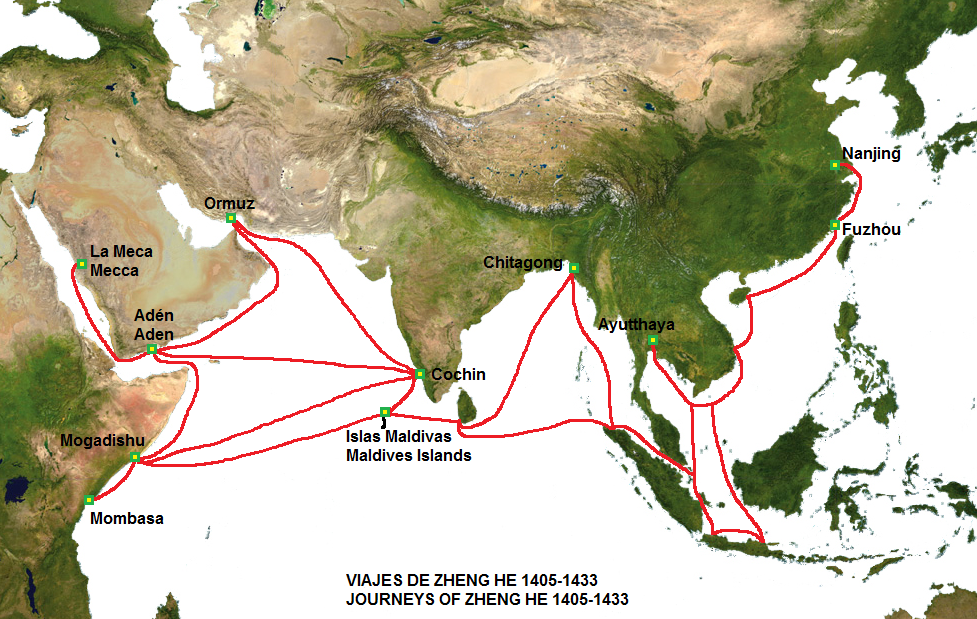 |
| Map of Cheng Ho's expeditionary voyages to Asia & Africa (1405-1433) |
 |
| Celebrating 611 years of Cheng Ho's voyages to Nanyang |
 |
| Gallery Admiral Cheng Ho |
 |
| Cheng Ho Cultural Museum |
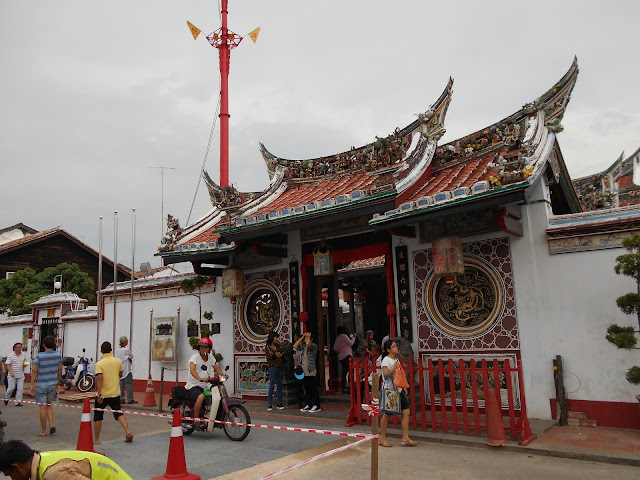 |
| Cheng Hoon Teng Temple |
 |
| Baba & Nyonya House Museum |
The story of The Sleepy Hollow - Melaka
Peninsula Malaya achieved her independence (Merdeka) from the British on 31 August 1957
611 years later, the old Malacca port which was under Portuguese, Dutch, British & Chinese influence since the start of the 13th century, is now gazette as an UNESCO World Heritage site and one of the most visited city by local & overseas tourists in Malaysia - after all, Melaka is only 2 hours drive from Kuala Lumpur, the capital of Malaysia !
















































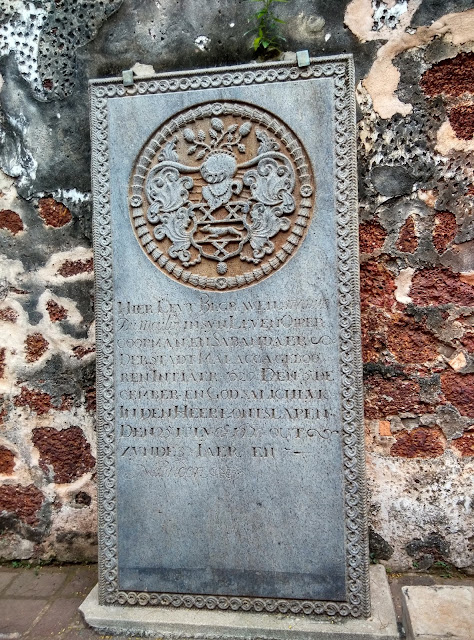














































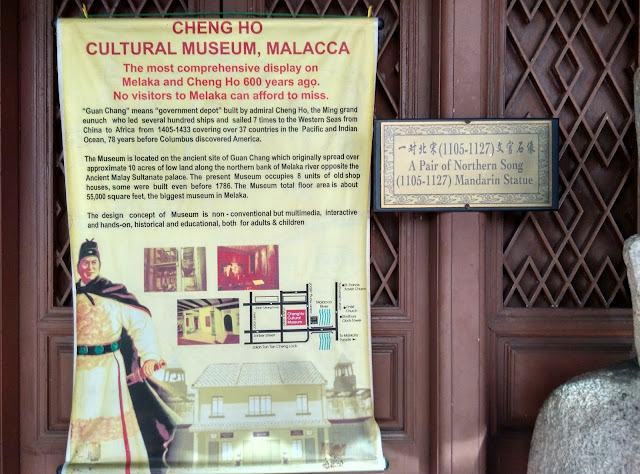






No comments:
Post a Comment